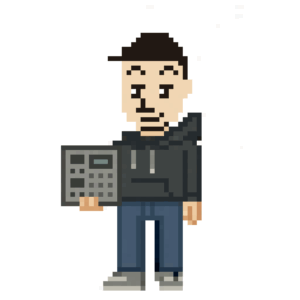Table of Contents
1. Be Transparent When Collaborating
- If you want to collaborate with a rapper, singer, or musician, always disclose that your beat was AI-generated. Many artists and labels are now cautious about using AI music, so transparency builds trust and avoids misunderstandings.
2. Uploading to Music Platforms: Proceed With Caution
- Major streaming services (Spotify, YouTube Music, etc.) now use AI fingerprinting to detect and often remove or restrict AI-generated tracks, especially those that mimic existing artists or copyrighted material.
- Platforms like SoundCloud or BeatStars are still relatively open, but their rules are evolving. Always check the latest terms of service before uploading.
3. Selling and Monetizing: Human Input Matters
- Fully AI-generated tracks cannot be copyrighted and are considered public domain in many regions. To claim ownership or sell your beat, you must add clear human creativity—such as original melodies, arrangement, vocals, or significant editing.
- Marketplaces like BeatStars and Airbit are tightening their rules on AI music, so be prepared to prove your human contribution if you want to sell.
4. YouTube and Social Media: Label Your AI Music
- You can still use AI beats in videos and promotional content, but label them as “AI-generated.” Adding your own story, visuals, or creative twist will help you stand out and avoid confusion.
- Being open about your process can also spark discussion and build your reputation as an innovative creator.
5. Use as Background Music: Royalty-Free, But Not Unique
- Since fully AI-generated beats are public domain, you can freely use them as background music for videos, podcasts, or livestreams. However, others can use the same beat, so add your own edits or layers if you want something unique.
6. Contests and Competitions: Check the Rules
- Many music contests now ban or restrict AI-generated entries, or require that the main creative input is human. Always read contest guidelines before submitting your beat.
7. Remix and Rework: Add Your Own Flavor
- Use AI beats as a starting point, then remix, rearrange, or add your own musical elements. This not only makes your work more original but also strengthens your claim to copyright and helps avoid takedowns.
8. Use as a Demo or Portfolio Piece
- AI-generated beats are still great for showcasing your production skills in a demo or portfolio. Just be clear with potential collaborators or clients about what was AI-generated and what was your own work.
9. Check AI Platform Licensing
- Each AI music tool has its own rules about commercial use and copyright. Always read the fine print and, if needed, keep proof of your license or permission to use the beat commercially.
10. Stay Informed and Keep Creating
- The rules and technology around AI music are changing fast. Stay updated on industry news, and keep experimenting with new ways to blend human creativity and AI tools. Your unique touch is what will set you apart in the AI era.
Summary
- You can no longer simply upload or sell pure AI-generated beats without risk—platforms are cracking down.
- To monetize or protect your work, add clear human creative input and document your process.
- Always check the latest platform and contest rules before sharing your music.
- Embrace transparency and keep developing your own creative style—this is your best asset in the age of AI music.


Leave a Reply